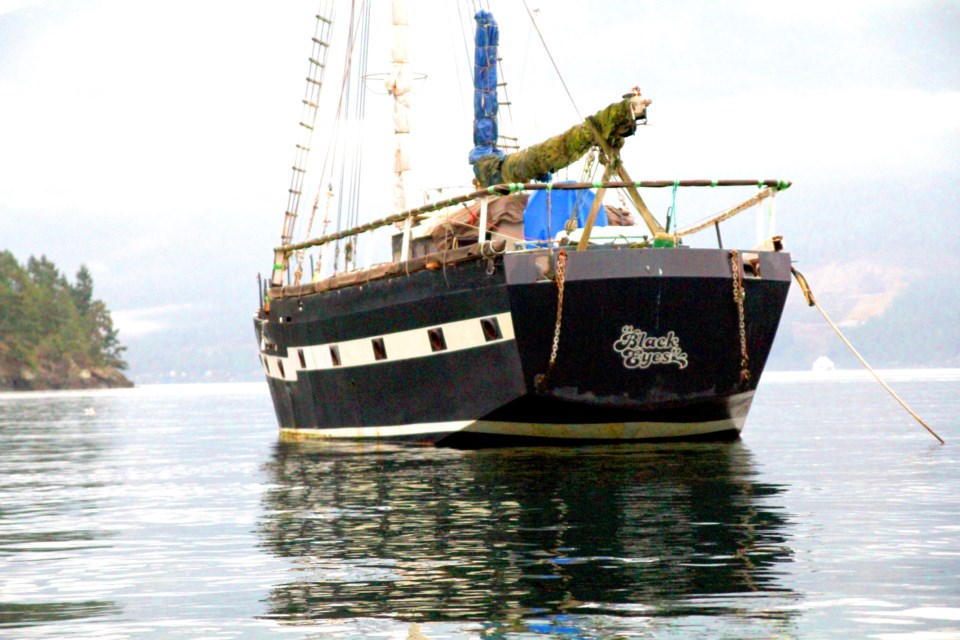Over a five year period, Bowen’s municipal council has developed a strategy aimed at “revitalizing” Mannion Bay, located just north of Snug Cove. With the recent granting of a Licence of Occupation (LOO) the Municipality will soon have the power to enforce regulations in the Bay. The Manager of Parks and Environment, Bonny Brokenshire, says there’s a “sea-change” coming, and last Thursday she held a stakeholders meeting along with Bowen’s Helping Hands group and a Caring Circle representative to try and prepare and offer assistance to those people whose lives and use of the Bay will be affected by the change.
“Letting people risk their lives on un-seaworthy boats is not supporting people,” said Brokenshire, addressing crux of the conflict on the Bay: people living on boats.
Typically, the number of “live-aboards,” drops during the winter and spikes during the summer. However, Brokenshire told community members attending the meeting that recently, an individual returned to his boat and within a four-week period, emergency services were called to attend to him four times. Fortunately this individual entered a drug and treatment recovery program. Currently, no one is living in Mannion Bay.
“There’s an elephant in the Bay so I’m just going to name it: addiction,” said Brokenshire. “I don’t want to see someone die.”
She also pointed to the clean-up costs caused by boats washing ashore (approximately $60,000 over five years, paid for by the Municipality, an estimated $30,000 covered by Transport Canada) and environmental damage including toxic paint being scraped onto prime spawning beaches, oil spills that have infiltrated chum salmon spawning areas in the lagoon, and more than 5,000lbs of debris removed from the bottom of the Bay by volunteers with the Dive Against Debris initiative.
“Usually, people seeking crown tenures are looking to change the environment. An example of this would be building a dock,” said Brokenshire, in reference to the LOO. “In this case, we are looking to restore the Bay’s socio-economic integrity.”
With this tool, the Municipality will be able to charge an nominal annual fee (e.g. $240/year is being recommended) to individuals keeping a mooring buoy in the Bay, and also request contact information and proof of boat insurance from those individuals. The money collected for mooring buoys will be funneled into restorative efforts in the Bay.
Non-compliance with these provisions may result in Trespass Act contraventions with fines being issued by the RCMP or Provincial Officers. Contravening vessels can be removed at the owner’s expense, and boaters will be allowed to live on their vessels in the Bay for no longer 48 hours.
Brokenshire added that she will be recommending to Council that BIM’s Land Use Bylaw be amended to not allow any more mooring buoys be added to the Bay. She explained that Transport Canada’s best practices for mooring buoys outlines specific “swing-distance” between them and with any more buoys in the Bay, that requirement would not be met.
Jennifer Davidson said the enforcement of a 48-hour limit on people residing on boats in Mannion Bay would make her homeless.
“I have lots of work, but can’t afford rent,” she said.
Another individual spoke on behalf of her landlord, who is providing her with a place to live by renting her house, and living on a boat in the meantime.
“She comes here to visit her family,” said the individual, noting that 48-hour stays would be in-adequate.
Damien Bryan spoke from the perspective of a recreational boater, and expressed his concern about the annual fees for mooring buoys on top of the costs of responsible boat ownership.
“Some boat owners pay for divers to go down and check that their mooring buoys are secure every year,” he said. “And we’ll have to add an annual fee to that expense?”
Bruce Russell, a waterfront property owner with a long family history on the Bay, has been a long-time supporter of the revitalization strategy and pushed to get it going in the first place. He said these changes deliver the changes he’s hoping for: more transient activity of tourists coming in and out of the Bay and supporting the local economy, as opposed to people moored there living through the summer.
Brokenshire noted that the specific details of the regulations and how they will be enforced are to be decided by council. The plan is expected to be in place by 2018.



